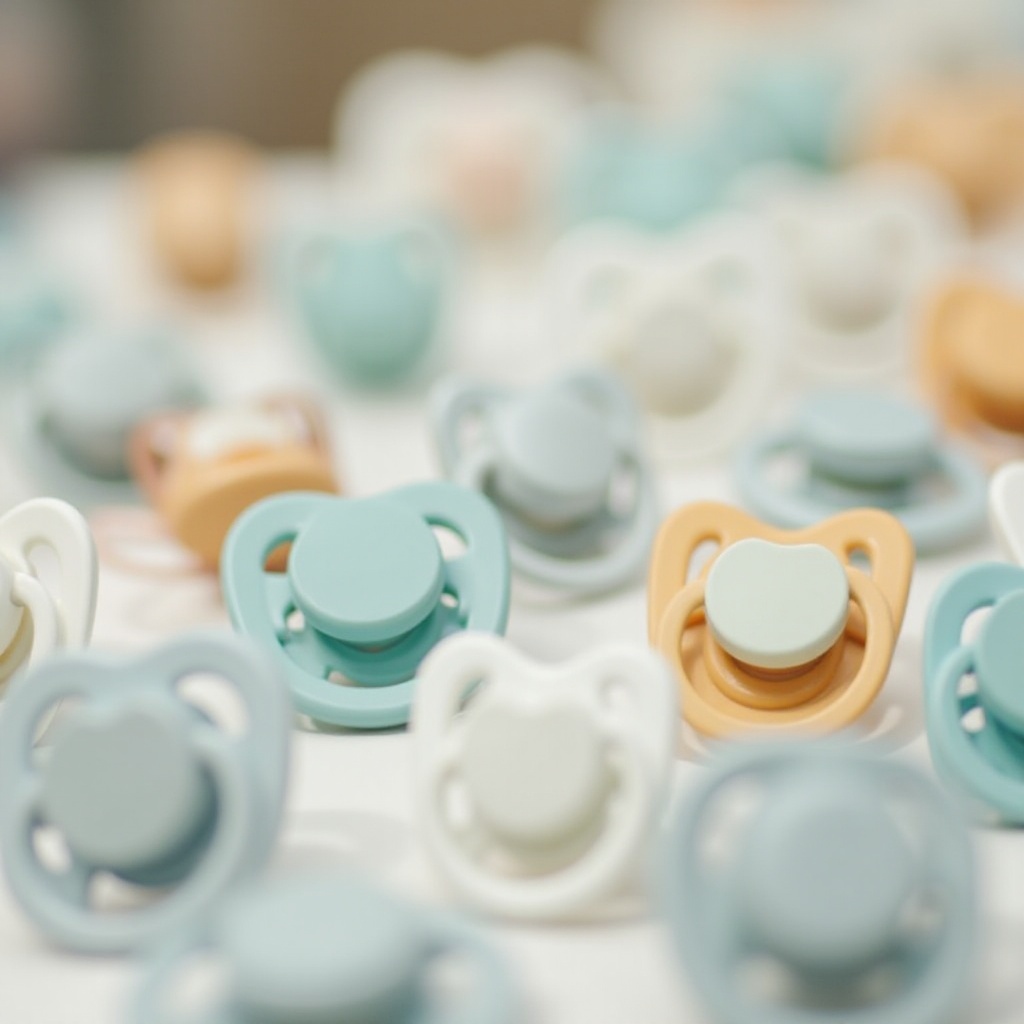Introduction
Pacifiers remain a vital tool for soothing infants, providing comfort and helping them self-soothe through sucking. However, the variety of pacifiers on the market can be overwhelming. To ensure your baby’s safety and health, knowing how to choose the healthiest options is essential. This article examines the key components that make pacifiers safe and healthy choices for your little one, focusing on materials, design, and top products available in 2024.

What Defines a Healthy Pacifier?
A healthy pacifier is crafted from non-toxic materials and incorporates designs that support safe and beneficial oral development. Parents should seek pacifiers made from BPA-free plastic, silicone, or natural rubber. These materials are safe, durable, and easy to clean. Design also plays a crucial role, with modern pacifiers tailored to align with a baby’s natural palate and jaw development. Avoiding potential health threats by selecting a well-designed pacifier safeguards your baby’s comfort and health. These criteria set the foundation for identifying the best materials for pacifiers.
Best Materials for Health-Conscious Pacifiers
Understanding material options helps in choosing the healthiest pacifiers. Here’s a look at some leading materials:
-
Silicone Pacifiers: They are a top choice due to their resilience and ease of cleaning. Silicone is non-toxic, does not harbor odors, and remains durable even with frequent use, offering peace of mind to parents.
-
Natural Rubber Pacifiers: A popular environmentally friendly option, these are softer than silicone, providing a gentle feel on the baby’s gums. However, they may wear out faster than silicone.
-
BPA-Free Options: Steering clear of bisphenol A assures you that chemicals posing health risks are avoided. BPA-free pacifiers are essential for protecting infants from exposure to this potentially harmful compound.
The next step is to examine how design properties can enhance a pacifier’s health benefits.
Design Features That Promote Infant Oral Health
A pacifier’s design is as crucial as its material. Designs that promote better oral health include:
-
Orthodontic Designs: These feature a flattened bottom and rounded top, fostering the natural development of teeth and gums by positioning the tongue and jaw as they naturally occur.
-
Ventilation Holes: These holes on pacifier shields allow air to circulate, reducing moisture and preventing skin irritation in the areas around the baby’s mouth.
-
Ergonomic Shapes: An ergonomic design ensures proper fit and comfort for infants, helping maintain stability in the mouth and supporting muscle development.
Having identified desirable design features, you can now explore the premier pacifiers available this year.
Top 5 Healthiest Pacifiers of 2024
Several brands have distinguished themselves this year by providing pacifiers that deliver optimum health benefits:
-
Brand A Pacifier: This product is notable for high-quality silicone and an orthodontic design, presenting a durable and comfortable choice for infants.
-
Brand B Pacifier: By utilizing natural rubber and incorporating ventilation holes, Brand B provides a solution that reduces skin irritation.
-
Brand C Pacifier: Offering BPA-free certification and a thoughtful ergonomic design, Brand C ensures top safety paired with comfort.
-
Brand D Pacifier: With a focus on orthodontic principles, Brand D supports jaw alignment and promotes mouth health through its innovative design.
-
Brand E Pacifier: Available in both silicone and natural rubber, Brand E caters to the diverse needs of infants while sustaining allergenic safety.
Informed choices centered around these brands necessitate following safe usage protocols to maximize the benefits of pacifiers.
Safe Practices for Using Pacifiers
Careful maintenance and usage of pacifiers contribute to their health benefits. Consider the following tips:
-
Cleaning and Maintenance: Clean pacifiers regularly using warm soapy water and rinse away all residues. Boil pacifiers intermittently to ensure sterilization.
-
Recognizing Wear and Tear: Examine pacifiers frequently for damage or wear such as tears or a loose nipple, which requires immediate replacement to prevent any hazards.
-
Age-Appropriate Use: Ensure that pacifiers match your growing child’s size and needs, allowing maximum health benefit throughout different developmental stages.
Through these practices, you uphold your pacifier’s role as a safe and beneficial tool for infant comfort.

Conclusion
Selecting the healthiest pacifiers involves careful consideration of materials, design, and brand excellence. Making informed decisions ensures comfort, safety, and developmental support for your baby. Consistent maintenance and appropriate usage maintain the pacifier’s health benefits, contributing positively to your child’s oral health.
Frequently Asked Questions
How often should a pacifier be replaced?
It’s recommended to replace a pacifier every 1-2 months, or sooner if you notice any signs of damage or wear.
Are pacifiers bad for baby teeth?
When used appropriately, pacifiers can actually support dental health, especially those with orthodontic designs. Consult your pediatrician for advice tailored to your child’s needs.
Can using a pacifier reduce the risk of SIDS?
Yes, several studies indicate that pacifier use during naps and nighttime can reduce the risk of Sudden Infant Death Syndrome (SIDS). Always ensure the pacifier is used safely.
